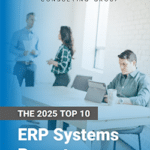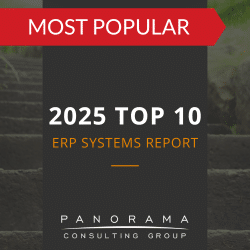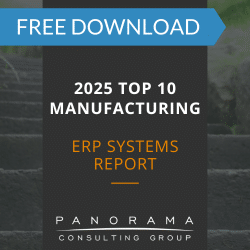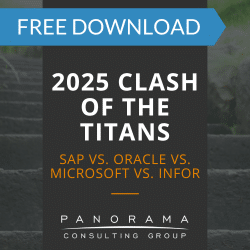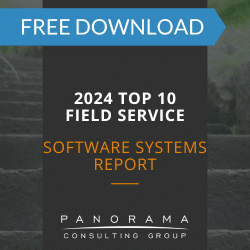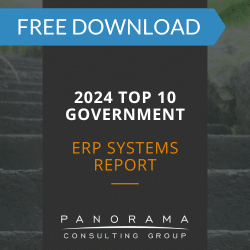- Many food and beverage IT project failures stem from misaligned strategy, rushed implementations, and a lack of industry-specific planning.
- Compliance gaps, poor data governance, and rigid ERP systems can cripple supply chain visibility and business agility.
- A successful ERP implementation in the food industry requires independent guidance, robust business process management, and phased rollouts.
- ERP and SCM system projects are strategic initiatives that require active executive involvement from selection through adoption.
Across the global food and beverage industry, companies face pressure to modernize. From recurrent supply disruptions to increasingly high expectations for traceability and sustainability, digitization is no longer optional.
Yet, amid this urgency, there’s a disconcerting trend: food and beverage IT project failures are alarmingly common.
Whether it’s the collapse of a food and beverage supply chain software rollout, or project management-related ERP implementation issues in the food industry, the consequences are costly.
Today, we’ll explore why these ERP failures persist and what CEOs and executive teams can do to avoid becoming the next cautionary tale.
Contemplating litigation?
We have multiple software expert witnesses available for provision of reports, depositions, and testimonies.
5 Reasons Food and Beverage IT Systems Fail
The food and beverage sector is a volatile, highly regulated industry where shelf-life, safety, and SKU proliferation collide. This environment demands digital tools that are not only flexible but deeply aligned with industry-specific requirements.
Many companies invest in popular ERP systems or supply chain management systems. However, these projects often lack the governance, planning, and teamwork needed for success.
Here are 5 reasons food and beverage IT systems fail:
1. Poor Alignment Between Business Strategy and Technology Execution
In our experience as an ERP consulting company, one of the most common causes of ERP failure is approaching the ERP project as an IT upgrade rather than a business transformation.
This is especially damaging in the food and beverage industry, where systems must integrate production, compliance, and distribution in real time. When implementation is driven by IT without strategic sponsorship, essential industry nuances are often lost.
2. Over Reliance on Vendor-Led Implementations
A vendor’s definition of “done” often excludes long-term agility.
Vendors are often incentivized to implement quickly—not correctly. While this speeds time to go-live, it usually skips the analysis needed to configure systems for specific regulatory and operational realities.
Functional gaps create vulnerabilities that emerge later, such as functional breakdowns or audit risks.
3. Insufficient Compliance and Traceability Planning
Food safety regulations, like FSMA, demand lot-level traceability, allergen controls, and expiration tracking. Yet many ERP projects fail to account for these needs early enough in the design.
Instead, compliance modules are patched in after rollout, leading to data silos and manual workarounds.
Your ERP or SCM system should support compliance natively—if it doesn’t, that’s a red flag.
4. Data Governance Is an Afterthought
Fragmented master data—especially in multi-site operations—can quietly erode the integrity of your ERP system. SKU duplication, inconsistent units of measure, and unverified supplier specs turn forecasting into guesswork.
Even the best manufacturing ERP systems require clean, validated data inputs.
For example, a global dairy producer might implement centralized master data management standards before selecting an ERP system. This would ensure data reliability and enable data-driven decision-making.
5. Selecting Rigid Systems That Can’t Adapt to Disruption
Whether due to climate change, border closures, or shifting consumer demands, food supply chains are always in flux. If your SCM system or ERP platform can’t flex to support last-minute supplier changes or real-time recipe adjustments, you lose speed and control.
Agility isn’t a luxury—it’s a survival requirement. Unfortunately, many systems are over-configured to historical norms and under-prepared for volatility.
How to Reduce Failure Risk
Food and beverage leaders need a deliberate, cross-functional approach—one that starts long before software selection and extends well beyond go-live.
Here are four steps that can reduce failure risk in food and beverage IT projects:
1. Start with Business Process Management
Before evaluating software, assess your current-state business processes across departments—especially where they intersect with compliance, shelf-life, traceability, and production complexity. Identify pain points, inefficiencies, and areas where automation could create measurable value.
From there, define your future-state requirements in tandem with software evaluation. This ensures that system selection is driven by your operational goals, not just by product demos or generic features. It also aligns your internal teams around a shared vision of what the ERP or supply chain management system is actually meant to enable.
2. Build a Structured, Value-Based Evaluation Framework
Rather than relying on generic vendor demos, develop a structured evaluation process grounded in your business priorities. This means scripting demo scenarios that reflect your actual operating model.
The goal is to move beyond superficial feature comparisons and instead evaluate how well each system supports your strategic needs—like lot-level traceability, allergen segregation, or production scheduling.
Cross-functional teams should be actively involved to ensure the selection reflects the entire organization’s needs, not just IT preferences.
3. Deploy in Phases
Resist the temptation of a “big bang” go-live. Instead, break your implementation into logical stages. Begin with high-risk areas, like traceability or production planning, before expanding to forecasting or CRM. Each phase should have a go/no-go gate tied to measurable business value.
4. Treat Change Management as Mission-Critical
In food and beverage companies, frontline teams hold deep process knowledge but are often left out of system design and rollout. That’s a mistake.
Change resistance isn’t about technology—it’s about trust. Your change management plan should include structured communication plans, role-specific training, and feedback loops to ensure high adoption.
Learn More About Food and Beverage IT Project Failures
ERP implementation isn’t just an operational decision—it’s a strategic one. And in an industry where food safety, speed, and supplier transparency are make-or-break, the stakes are too high to delegate.
Food and beverage IT project failures are avoidable—but only when executive teams treat them as more than technology deployments. Contact our ERP implementation consultants to learn more.
